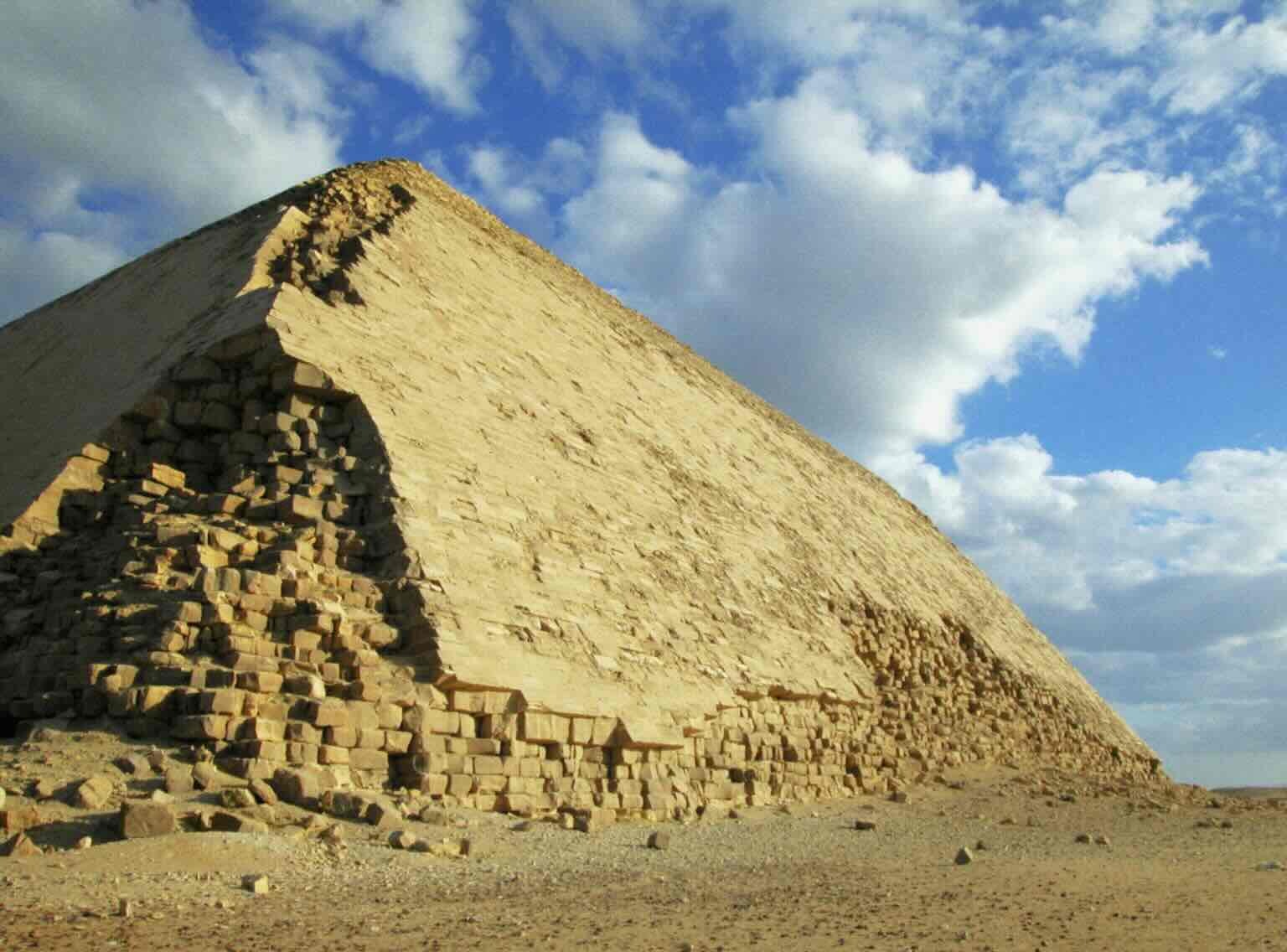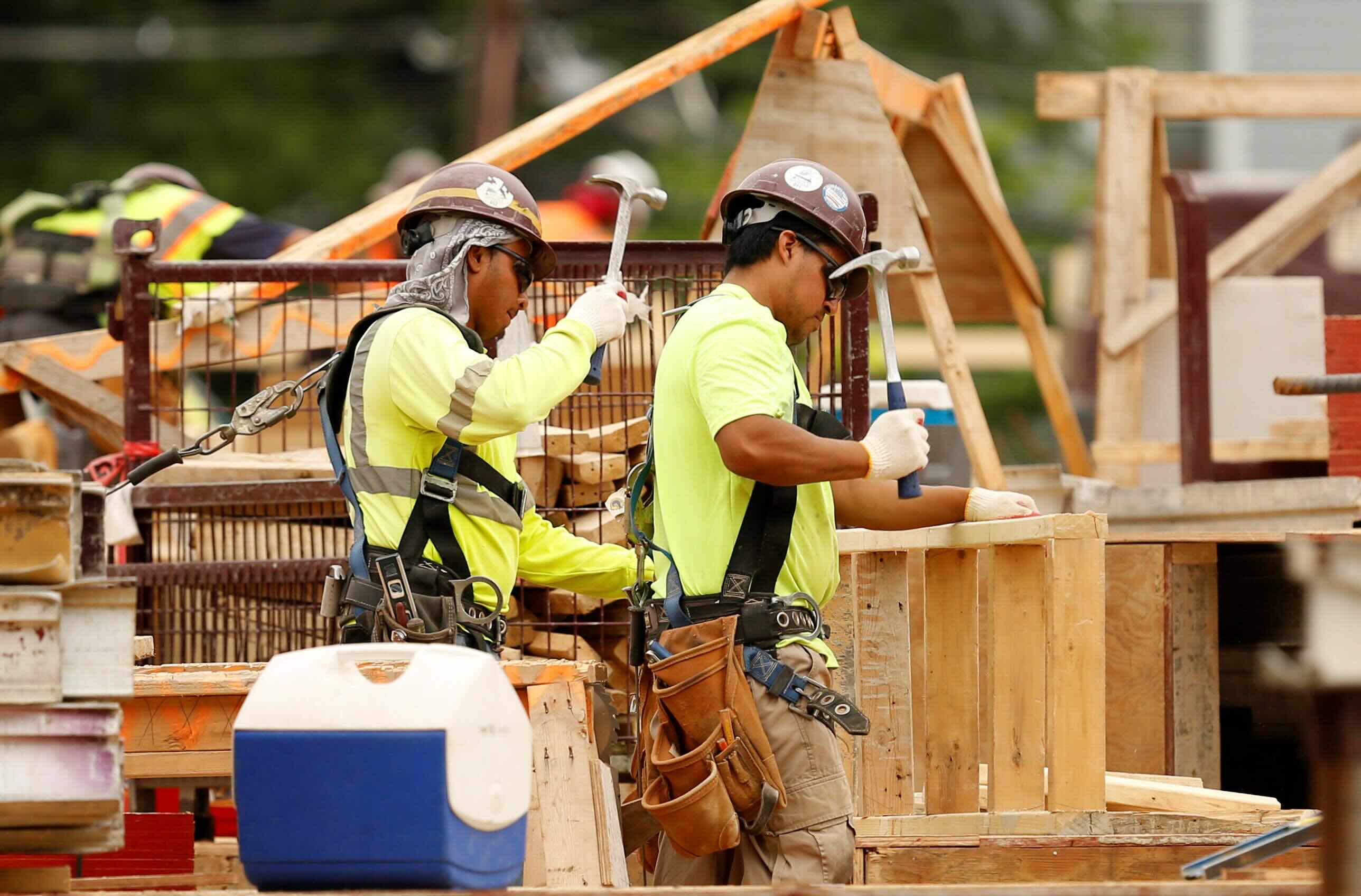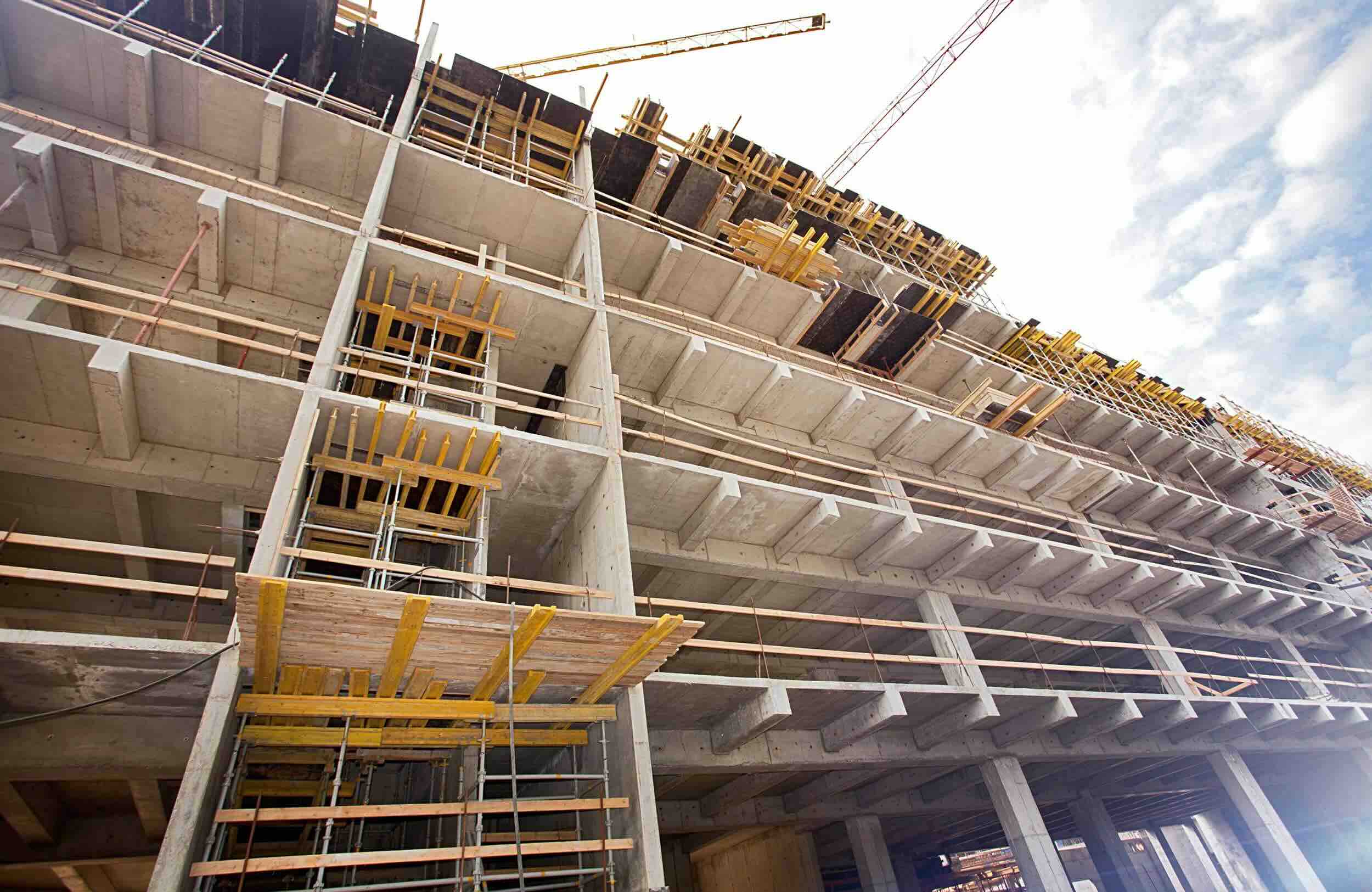Home>diy>Building & Construction>Why Was The Construction Of Pyramids Stopped?


Building & Construction
Why Was The Construction Of Pyramids Stopped?
Modified: December 7, 2023
Discover the intriguing reasons behind the abrupt cessation of pyramid construction in ancient times. Uncover the mysteries surrounding this fascinating era of building construction.
(Many of the links in this article redirect to a specific reviewed product. Your purchase of these products through affiliate links helps to generate commission for Storables.com, at no extra cost. Learn more)
Introduction
The Great Pyramids of Egypt are one of the most astonishing architectural achievements in human history. Standing tall on the outskirts of Cairo, these colossal structures have captivated people for centuries with their grandeur and mystery. Built as tombs for the pharaohs of ancient Egypt, the construction of these pyramids remains a subject of fascination and intrigue.
While we marvel at the engineering feats of the pyramids, it is equally intriguing to ponder why their construction eventually came to a halt. Historians, archaeologists, and experts in the field have proposed various theories to explain the pause in pyramid construction.
In this article, we will delve into the possible reasons why the construction of the pyramids stopped, considering factors ranging from economic and social issues to political and religious upheavals, as well as natural disasters and invasions.
So, let us embark on a journey through the sands of time to uncover the enigmatic pause in the construction of the legendary pyramids of Egypt.
Key Takeaways:
- The pause in pyramid construction was influenced by a combination of economic, social, political, religious, and environmental factors, showcasing the intricate challenges faced by ancient Egyptian society.
- Resource scarcity, labor depletion, shifting priorities, and external threats all contributed to the interruption of pyramid construction, highlighting the multifaceted nature of the ancient Egyptian civilization.
Read more: Why Jeddah Tower Construction Stopped
The Great Pyramids of Egypt
The Great Pyramids of Egypt, located on the Giza Plateau, are a testament to the mastery and ingenuity of the ancient Egyptians. These majestic structures were built as tombs for the pharaohs of the Old Kingdom, serving as the final resting places for their earthly remains.
There are three main pyramids in Giza, namely the Great Pyramid of Khufu (also known as Cheops), the Pyramid of Khafre, and the Pyramid of Menkaure. These pyramids were constructed around 4,500 years ago, during the 26th century BCE, and have stood the test of time with their durable limestone and granite blocks.
Khufu’s Great Pyramid, the largest among the three, is the most iconic. It was originally around 481 feet tall, with a base length of 756 feet. The precision and accuracy with which these colossal structures were built is awe-inspiring, considering the limited tools and technology available at that time.
Not only do the pyramids showcase exceptional craftsmanship, but they also astound with their intricate interior design. Each pyramid is adorned with various chambers and passages, including the burial chamber where the pharaoh’s sarcophagus was placed.
The construction of the pyramids required an immense amount of planning, organization, and labor. It is estimated that tens of thousands of laborers, including skilled craftsmen, engineers, and overseers, were involved in the construction process. The logistics involved in quarrying the massive stone blocks, transporting them to the construction site, and precisely placing them to create the distinct pyramid shape is a testament to the meticulous planning and engineering prowess of the ancient Egyptians.
While the architectural brilliance of the pyramids is widely celebrated, it is equally intriguing to explore what led to the eventual cessation of their construction.
The Construction of the Pyramids
The construction of the pyramids was a monumental undertaking that spanned several decades. It involved a sophisticated system of planning, engineering, and coordination to ensure the successful completion of these colossal structures.
The process of constructing a pyramid began with the selection of a suitable site. The Giza Plateau, with its flat terrain and proximity to the Nile River, provided an ideal location for the pyramids. Once a site was chosen, the builders would mark out the dimensions and shape of the pyramid on the ground.
Quarrying and transportation of the massive stone blocks were critical components of the construction process. The builders would identify and excavate limestone and granite from quarries nearby, ensuring that the quality of the stone was suitable for the construction. These blocks, some of which weighed several tons, were then transported to the construction site using a combination of sledges, ramps, and manpower.
One of the key challenges in pyramid construction was achieving the precise alignment and fitting of the blocks. The builders utilized a system of ramps and scaffolding to raise each layer of the pyramid, carefully aligning the blocks using levels and plumb lines. The edges of the blocks were meticulously shaped to create a smooth and seamless surface.
As the pyramid grew in height, internal passages and chambers were constructed. These passages, including the grand gallery and the burial chamber, were essential components of the pyramid’s architectural design, serving both functional and symbolic purposes.
The construction process also involved the installation of the pyramid’s outer casing, which gave the structure its smooth and polished appearance. These casing stones were precisely fitted to cover the entire surface of the pyramid, creating a visually striking monument.
Overall, the construction of the pyramids required immense manpower, meticulous planning, and expert craftsmanship. It was a demonstration of the ancient Egyptians’ advanced knowledge of engineering and their deep reverence for their pharaohs.
Theories on Why the Construction Stopped
The abrupt halt in the construction of the pyramids has puzzled historians and researchers for centuries. While there is no definitive answer, several theories have been proposed to explain why the construction of these architectural marvels came to a pause.
One theory suggests that economic and social factors played a significant role. The construction of the pyramids required an enormous amount of resources, including labor, stone, and food. As the empire faced economic and social challenges, such as changes in political leadership, resource scarcity, or social unrest, the allocation of resources towards pyramid construction may have become unsustainable.
Labor and resource depletion is another theory. Building the pyramids involved the mobilization of a massive labor force, which may have put a strain on the available workforce. Additionally, the extensive quarrying of stone and deforestation for construction materials could have led to the depletion of vital resources, making it increasingly difficult to sustain the construction efforts.
Political and religious factors have also been proposed as explanations for the cessation of pyramid construction. Pharaohs were considered divine rulers, and their tombs were not only monuments to their greatness but also served as a means to ensure their eternal afterlife. It is possible that changes in religious beliefs or shifts in political power resulted in a shift in priorities, diverting resources away from pyramid construction and towards other endeavors.
Natural disasters and invasions have also been considered as factors contributing to the construction halt. Egypt experienced periods of instability and invasions from neighboring civilizations, such as the Hyksos. These external threats and internal turmoil could have disrupted the construction process and diverted the attention of the ruling powers.
While each theory offers valuable insight, it is essential to consider that a combination of these factors might have contributed to the pause in pyramid construction. The complexity of these structures, coupled with the intricate political, economic, and social dynamics of the time, makes it challenging to pinpoint a single definitive reason.
Ultimately, the mystery surrounding the cessation of pyramid construction adds to the wonders and allure of these ancient structures, leaving us with a sense of awe and intrigue for the civilization that built them.
Economic and Social Factors
Economic and social factors played a crucial role in the construction of the pyramids and their eventual cessation. The ancient Egyptian civilization thrived on a complex socio-economic system, and any disruption to this delicate balance could have had profound effects on pyramid construction.
One significant economic factor that may have influenced the pause in pyramid construction was resource scarcity. The construction of these massive structures required an enormous amount of resources, including stone, labor, and food. As the empire expanded and the demand for resources increased, it is possible that the supply could not keep up with the pace of construction. This scarcity of vital resources may have led to a slow-down or even a complete halt in pyramid construction.
Social factors, such as changes in political leadership and social unrest, may have also impacted the construction process. The construction of the pyramids was a massive undertaking that required the coordination and organization of thousands of workers. Political instability or a change in rulership could have disrupted this coordination, making it increasingly difficult to sustain the construction efforts. Social unrest and dissatisfaction among the workforce may have further hindered the progress of the construction, leading to its eventual halt.
Additionally, the allocation of resources and labor towards pyramid construction may have impacted other essential sectors of the economy. The agricultural sector, for example, played a vital role in sustaining the empire. If resources and labor were redirected towards pyramid construction, it could have negatively affected agricultural production, leading to food shortages and economic instability.
Moreover, the financing of pyramid construction was a significant undertaking. The ancient Egyptian economy relied heavily on a system of taxation, which helped fund the construction of monumental projects. However, if the economy faced downturns or revenue fluctuations, it would have been challenging to sustain the financial resources needed for pyramid construction.
Ultimately, a combination of economic and social factors likely contributed to the pause in pyramid construction. The complex interplay between resource scarcity, political changes, social unrest, and economic stability would have had a profound effect on the ability to sustain such grand construction projects.
Understanding these economic and social factors provides valuable insight into the challenges faced by ancient Egyptian society and sheds light on the complexities involved in the construction of the pyramids.
The construction of pyramids in Egypt likely stopped due to a combination of factors such as economic strain, political instability, and a shift in religious beliefs. The decline of the Old Kingdom and the rise of the Middle Kingdom may have also played a role.
Read more: Why Work In Construction
Labor and Resource Depletion
The construction of the pyramids required an immense labor force, comprising skilled craftsmen, engineers, overseers, and laborers. The sheer number of workers involved in the construction process suggests that labor played a critical role in both the progress and eventual halt of pyramid construction.
One factor that contributed to the pause in pyramid construction was the depletion of the available labor force. Building such colossal structures required a significant number of workers, and sustaining this labor force would have been a monumental task. Over time, the number of available workers may have dwindled due to various reasons, such as injuries, illness, or even mortality. The loss of skilled workers and the inability to replace them could have slowed down the construction progress, eventually leading to its cessation.
Moreover, the construction of the pyramids was physically demanding and required intensive manual labor. The workers were responsible for quarrying and transporting massive stone blocks, an arduous task that would have taken a toll on their physical well-being. With the passage of time, the laborers may have become exhausted, resulting in diminished productivity and a decline in the speed of construction.
Another aspect of labor depletion is the potential impact on the artisans and craftsmen involved in the construction process. Skilled workers, such as stonemasons and sculptors, played a crucial role in creating intricate architectural details and decorations on the pyramids. If these skilled craftsmen were in short supply or had moved on to other projects or pursuits, it would have been difficult to maintain the same level of craftsmanship and attention to detail that characterized the early stages of pyramid construction.
In addition to labor depletion, resource exhaustion likely contributed to the pause in pyramid construction. The quarrying of stone for the pyramids required the exploitation of nearby limestone and granite deposits. Over time, the depletion of these resources may have made it increasingly difficult to source the necessary building materials. Without a readily available supply of high-quality stone, it would have been impossible to continue the construction of the pyramids in the same manner as before.
The combination of labor depletion and resource exhaustion ultimately created significant challenges for the continuation of pyramid construction. As the labor force diminished and the availability of vital resources dwindled, it became increasingly difficult to sustain the monumental efforts required to build these magnificent structures.
Understanding the impact of labor and resource depletion provides valuable insights into the challenges faced by the ancient Egyptians and the reasons behind the pause in pyramid construction.
Political and Religious Factors
Political and religious factors played a significant role in the construction of the pyramids and their eventual halt. The ancient Egyptian civilization was deeply intertwined with the pharaoh’s divine authority, and any shifts in political power or changes in religious beliefs could have had profound implications for pyramid construction.
One political factor that potentially influenced the pause in pyramid construction was a change in ruling pharaohs. Each pharaoh desired to leave behind a monumental tomb that would commemorate their reign and ensure their eternal afterlife. However, if a pharaoh died before the completion of their pyramid, the subsequent ruler might have prioritized their own projects, diverting resources and labor away from the unfinished pyramid. The change in leadership and the shift in priorities could have contributed to the interruption of pyramid construction.
Religious beliefs and practices also played a crucial role in pyramid construction. The pyramids were not merely tombs; they were sacred monuments that were deeply rooted in the religious beliefs of ancient Egyptian society. The pyramids were seen as a means to facilitate the pharaoh’s journey into the afterlife and ensure their immortality. However, changes in religious ideologies or the rise of new religious movements may have led to a shift in the importance placed on pyramid construction. If the ruling elite or the general population began to gravitate towards different religious practices, the significance of pyramid construction would have diminished, resulting in a hiatus in their construction.
Furthermore, maintaining the ideological and religious significance of the pyramids required ongoing rituals and ceremonies. These rituals required the presence of priests, offerings, and the participation of the ruling elite. If political instability or a decline in religious adherence occurred, the ceremonies and rituals associated with the pyramids might have ceased or been significantly reduced. Without the religious and symbolic importance associated with these structures, the motivation to continue pyramid construction may have waned.
It is important to note that political and religious factors are intricately intertwined in ancient Egyptian society. The pharaoh, as the divine ruler, held both political and religious authority. Therefore, any political changes would have had a direct impact on religious practices, and vice versa.
Understanding the influence of political and religious factors provides valuable insights into the complexities of ancient Egyptian society and sheds light on the reasons behind the interruption in pyramid construction.
Natural Disasters and Invasions
Natural disasters and invasions are factors that could have significantly impacted the construction of the pyramids in ancient Egypt. The region experienced various environmental challenges and external threats, which may have played a role in the interruption of pyramid construction.
Natural disasters, such as floods, earthquakes, and droughts, were not uncommon in ancient Egypt. The Nile River, which was the lifeblood of the empire, could overflow its banks and cause devastating floods. These floods could disrupt agricultural activities and infrastructure, diverting resources and attention away from pyramid construction. Similarly, earthquakes could damage or destroy structures and render construction efforts futile. Droughts, on the other hand, could lead to water shortages, affecting both the labor force and the availability of resources needed for construction.
Invasions from neighboring civilizations were also a constant threat to ancient Egypt. Throughout its history, Egypt faced invasions from various groups such as the Hyksos, Libyans, and Nubians. These invasions brought periods of instability and turmoil, with resources and manpower diverted towards defense and the military. The constant need to protect the empire and repel invasions could have hindered the progress of pyramid construction, forcing a temporary pause or even abandonment of the projects.
Furthermore, the interruption in pyramid construction may have been a strategic decision made by the ruling powers in response to external threats. With ongoing invasions and the possibility of looting and destruction, completing the pyramids may not have been a top priority. Instead, resources and labor may have been diverted towards strengthening defenses or fortifying other crucial infrastructure to protect the empire.
It is worth noting that natural disasters and invasions are intricately connected. Natural disasters can create vulnerabilities that neighboring civilizations may exploit, taking advantage of the empire’s weakened state to launch invasions. These external threats combined with internal challenges could have posed significant obstacles to the continuation of pyramid construction.
While we cannot pinpoint specific natural disasters or invasions that definitively caused the pause in pyramid construction, the recurring environmental challenges and external aggressions undoubtedly influenced the decision-making process of the ruling elite.
Understanding the impact of natural disasters and invasions provides valuable insights into the vulnerabilities faced by ancient Egyptian society and adds another layer of complexity to the pause in pyramid construction.
Conclusion
The construction of the Great Pyramids of Egypt remains an awe-inspiring testament to human ingenuity and architectural brilliance. As we explore the reasons behind the pause in pyramid construction, it becomes evident that multiple factors contributed to the interruption of these monumental projects.
Economic and social factors such as resource scarcity, labor depletion, and shifting priorities undoubtedly played a significant role. The immense scale of pyramid construction demanded an enormous amount of resources, labor, and coordination, making it susceptible to the fluctuations and challenges of the ancient Egyptian society.
Political and religious factors also influenced the construction of the pyramids. Changes in ruling pharaohs, religious beliefs, and rituals could have diverted resources and attention away from pyramid construction. The significance of these structures within the political and religious contexts of ancient Egypt makes them vulnerable to shifting priorities and ideological changes.
In addition, natural disasters and invasions posed significant obstacles to pyramid construction. Environmental challenges such as floods, earthquakes, and droughts disrupted the availability of resources and labor. Meanwhile, invasions from neighboring civilizations threatened the stability of the empire, diverting resources towards defense and impacting the progress of construction projects.
Ultimately, the pause in pyramid construction was likely the result of a combination of these factors. The complexity and grandeur of the pyramids, coupled with the intricacies of ancient Egyptian society, make it challenging to pinpoint a single definitive reason.
Nevertheless, the mystery surrounding the pause in pyramid construction adds to their allure and legacy. These majestic structures stand as a testament to the power and achievements of the ancient Egyptian civilization, captivating the imagination of people for centuries.
As we continue to study and explore the pyramids, we gain valuable insights into the challenges, triumphs, and cultural dynamics of ancient Egypt. The enigmatic pause in construction serves as a reminder of the complexities faced by ancient civilizations and the remarkable accomplishments they left behind.
Frequently Asked Questions about Why Was The Construction Of Pyramids Stopped?
Was this page helpful?
At Storables.com, we guarantee accurate and reliable information. Our content, validated by Expert Board Contributors, is crafted following stringent Editorial Policies. We're committed to providing you with well-researched, expert-backed insights for all your informational needs.















0 thoughts on “Why Was The Construction Of Pyramids Stopped?”